
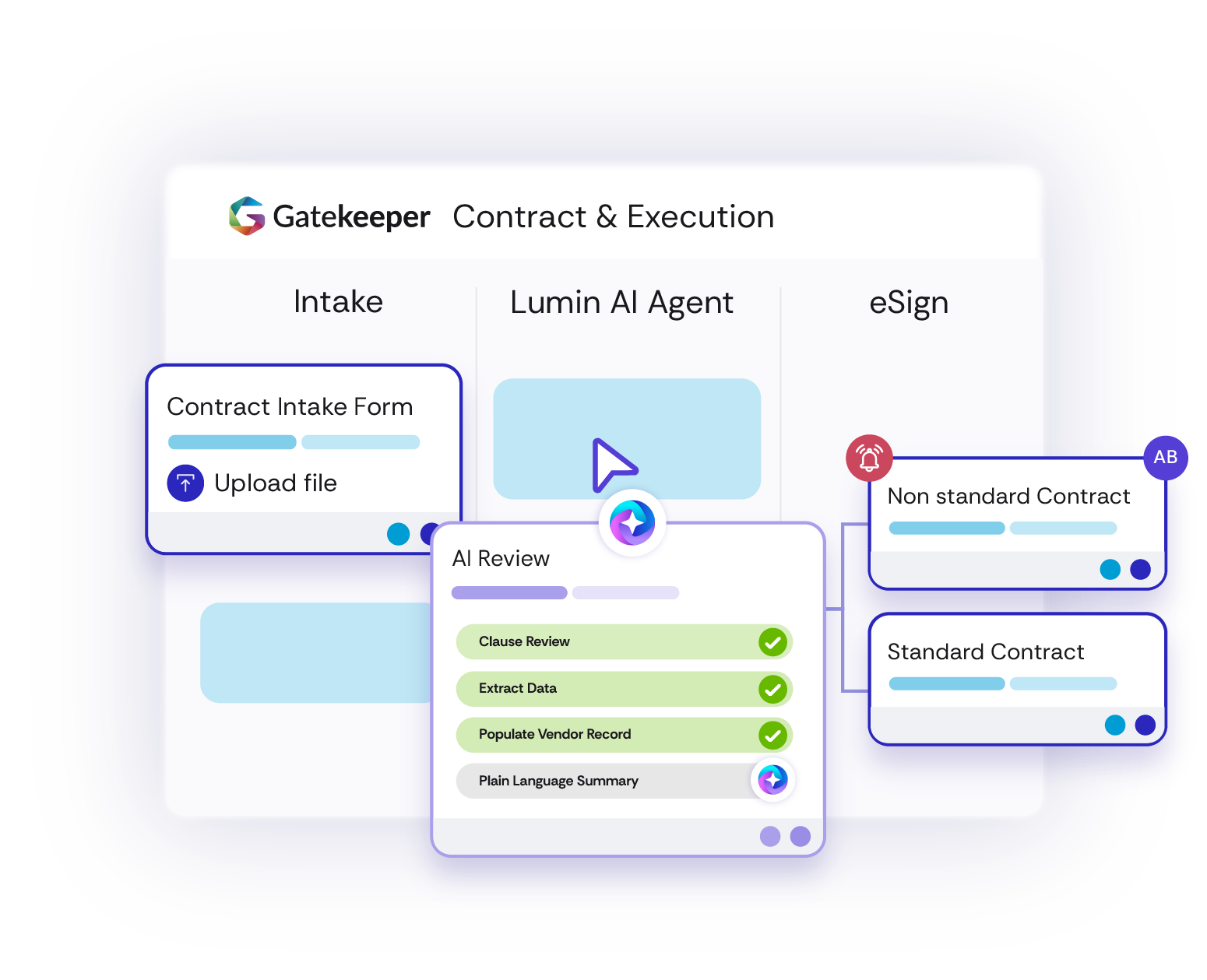
Automating and centralizing contract management is now table stakes for compliance-driven businesses.
If you’re researching Contract Lifecycle Management (CLM) software, you’re already on the right track. But here’s the key point: CLM alone is no longer enough.
Nearly every CLM vendor now promises automation and AI. These features can speed up contract drafting and negotiation, helping teams move faster. But speed doesn’t solve the core problems procurement and governance leaders face.
Most CLM tools stop at the document. They don’t address the bigger issues outside the contract workflow, including:
Fragmented third-party risk checks
Uncontrolled renewals and spend leakage
Vendor and contract data trapped in silos
That’s why leading organizations are looking beyond standalone CLM. They’re choosing platforms that connect contracts, third-party management, and spend in one unified process - so control doesn’t end at signature.
Contract management software is designed to automate and streamline how organizations handle agreements. At its most basic, it digitizes the manual work involved in:
Creating and negotiating contracts
Approving and signing agreements
Tracking renewals and key dates
Reporting on contract activity
Modern contract lifecycle management solutions typically add automated workflows, eSignatures, and agentic AI to improve speed and consistency.
These capabilities matter - but they only solve the contract workflow.
CLM speeds up documents. It does not unify the bigger picture of risk, compliance, and spend that procurement and compliance leaders are ultimately accountable for. Without those connections, organizations remain exposed to:
Audit failures caused by missing or outdated evidence
Uncontrolled costs from silent auto-renewals
Vendor blind spots that only surface when it’s too late
In short, contracts move faster, but control remains fragmented.
According to World Commerce & Contracting, 26% of a typical organization’s workforce is involved in contracting. That alone explains why contract processes become a drag on the business when they’re manual, fragmented, or owned by too many disconnected teams.
CLM software helps by standardizing how contracts move through the organization. Within the contract process itself, it delivers real improvements:
Faster, more consistent execution
Standardized workflows and templates reduce rework and manual errors, allowing Legal and Procurement to move contracts through review and signature more predictably.
Basic renewal and obligation visibility
Centralized repositories make it easier to see key dates and terms, reducing the risk of contracts being lost in inboxes or shared drives.
Clearer collaboration between Legal and Procurement
A shared workspace reduces handoff friction and shortens review cycles by keeping redlines, approvals, and versions in one place.
Improved audit posture at the document level
Version control and structured storage help teams show what was signed, when, and by whom.
Shorter time-to-contract
Digital workflows remove obvious bottlenecks, helping the business move faster.
These gains explain why CLM adoption has accelerated. But they also define the boundary of what CLM was designed to do.
CLM improves how contracts are processed. It does not govern whether third-party risk was acceptable before signature, whether compliance is maintained after signature, or whether the value negotiated is actually realized over time.
That’s where a unified, risk-first approach delivers materially different outcomes.
With Gatekeeper, organizations don’t just speed up contracts—they connect them to third-party risk, compliance evidence, and live spend data in one continuous system. The result is control that extends beyond the contract workflow:
75% faster contracting time through AI-powered summaries and clause suggestions
Up to 90% faster third-party onboarding and compliance, because risk is qualified before Legal engages
Up to 17% of vendor spend recovered by identifying duplicate suppliers, unused contracts, and renewal leakage
$1.3M saved on average by eliminating unwanted renewals
Up to 400 hours saved per audit cycle through continuous, audit-ready records
Rather than your contract management approach looking like this:

Gatekeeper allows it to look like this:

Most CLM systems apply AI in passive ways: clause extraction, search, and summaries. These features make documents easier to review, but they don’t change the underlying operating model. Humans still drive every workflow, chase every approval, and manually connect contracts to risk, compliance, and spend.
The next generation of contract management is built on agentic AI - AI that doesn’t just analyze contracts, but actively executes work across the contract and third-party lifecycle.
Gatekeeper’s LuminIQ AI agents are designed for this shift.
Instead of acting as a feature inside a CLM module, LuminIQ agents operate continuously across onboarding, contracting, approvals, and post-signature governance - reducing workload while increasing control.
The impact of this approach is best seen in practice.
At CompSource Mutual Insurance, LuminIQ agents transformed executive contract review by automating the heavy lifting:
95% reduction in executive review time per contract
636 hours saved annually (the equivalent of 17 weeks of capacity)
Executives now review 10-line AI summaries instead of 13-page contracts
Eliminated back-and-forth between Legal, Finance, and Procurement
The result wasn’t just faster contracts - it was structural change. Reviews became focused, approvals accelerated, and leadership stayed informed without becoming a bottleneck.
This is the difference between AI-assisted CLM and agentic contract management.
That distinction matters as contracting volume rises and teams remain lean. The best contract management software in 2026 will be judged on its ability to:
Collapse review cycles without increasing risk
Scale governance without adding headcount
Keep executives informed without pulling them into process
When evaluating contract management software, platforms like G2 provide valuable insights through independent user reviews and ratings. We’ve focused on three essential criteria to support your CLM shortlist: ease of use, ease of setup, and quality of support.
Ease of Use: The software should be intuitive for all stakeholders - from Legal to Procurement to Finance. Teams should be able to adopt it quickly without long training programs. The easier it is to use, the faster it delivers value.
Ease of Setup: Implementation should be smooth and low-friction, so organizations can realize benefits quickly without costly delays or disruption to existing workflows.
Quality of Support: Reliable, expert support ensures issues are resolved quickly. This protects business continuity and helps teams keep momentum.
From a business perspective, these factors matter because they directly impact time-to-value, productivity, and overall return on investment.
| Platform | Ease of Use | Ease of Setup | Quality of Support |
|---|---|---|---|
| Gatekeeper | 9.0 | 8.2 | 9.4 |
| Ironclad | 8.8 | 8.2 | 8.7 |
| DocuSign CLM | 8.6 | 8.0 | 8.5 |
| Agiloft | 8.4 | 7.1 | 8.7 |
| Conga | 8.0 | 7.3 | 8.4 |
Correct 08/01/2026
Gatekeeper is the only unified platform for managing contracting, third-parties and spend. Where traditional CLM tools stop at documents, Gatekeeper closes the gaps that create risk, cost and wasted time.
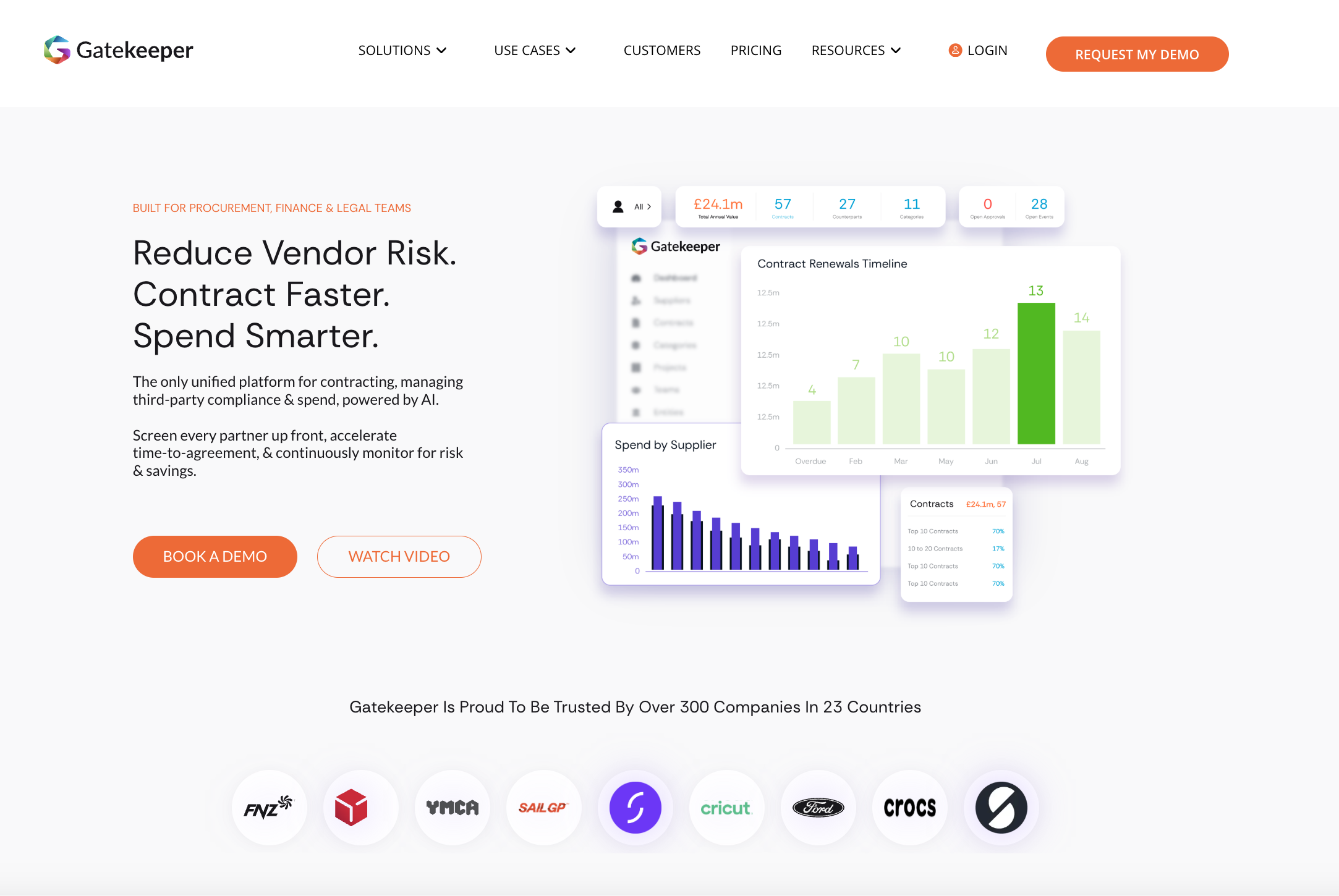
Our platform connects every third-party touchpoint into a single continuous process:
Risk-First: Screen and approve vendors before they touch systems or data, blocking unacceptable risk at the start.
Contract Fast and Safely: Accelerate negotiations with guard-railed workflows, clause support and integrated eSignatures, so agreements close quickly without compromising compliance.
Manage for Value: Link contract terms to live spend and performance data to prevent leakage, surface savings and keep every renewal under control.
Gatekeeper also integrates seamlessly with existing business systems. As NetSuite Partner of the Year 2024 and the only Built for NetSuite SuiteApp for contract and third-party management, we enable Finance, Procurement and Legal teams to work from one unified source of truth.
With LuminIQ Agents automating the manual grind, Gatekeeper delivers perpetual audit-readiness, accelerated time-to-contract and measurable savings that flow straight to the bottom line.
Independent customer reviews of Gatekeeper highlight:
Agiloft positions its platform as a data-first contract lifecycle management solution with an increased focus on embedded AI capabilities.
Recent updates highlight its “AI on the Inside™” strategy, integrating tools for contract review, clause analysis, while the launch of its Prompt Lab and AI Your Way workflows gives users greater control over generative AI analysis.
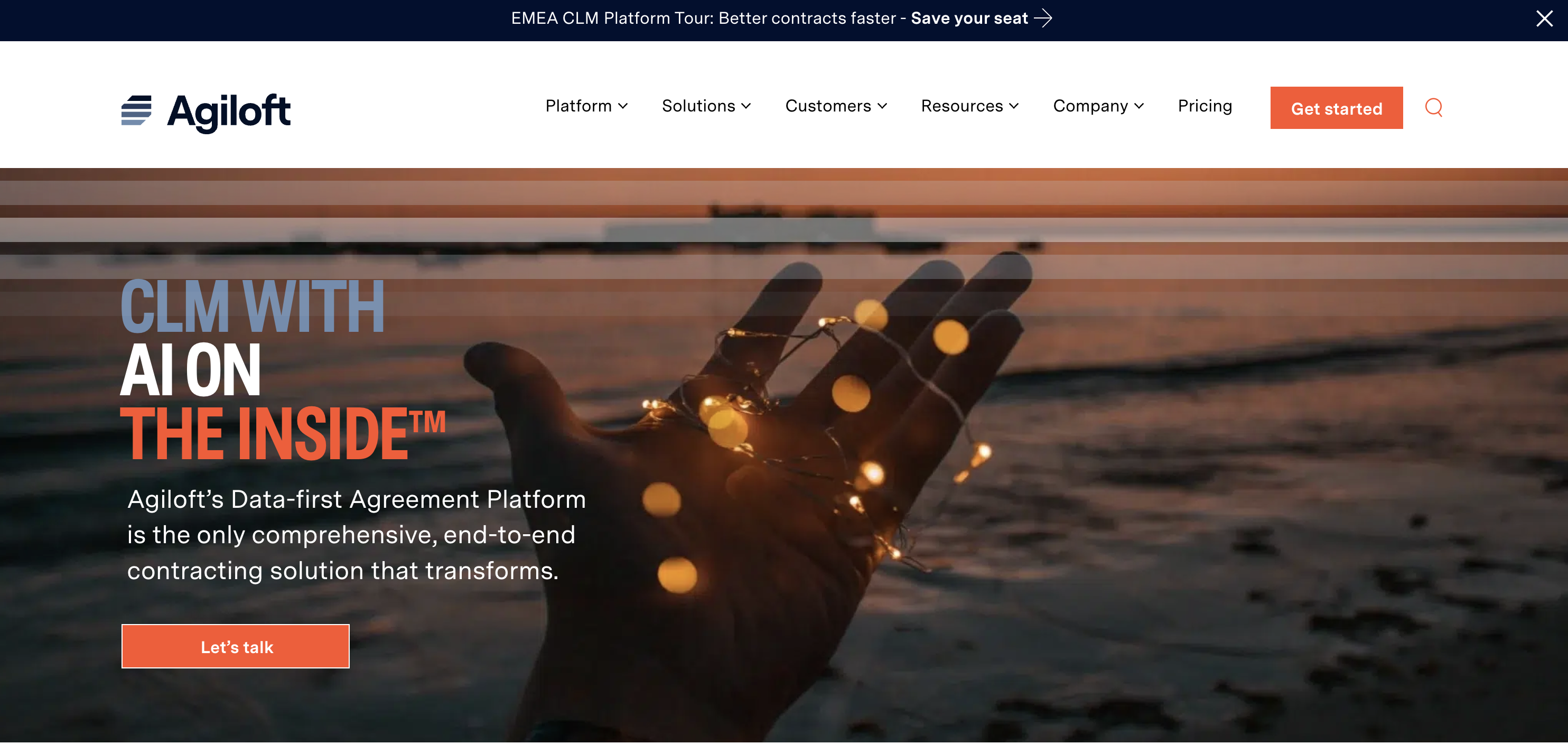
Although Agiloft claims to help businesses of all sizes with its flexible and quick-to-customize solution, independent customer reviews on Capterra show the opposite:
DocuSign CLM now forms part of its Intelligent Agreement Management platform, with its Iris AI engine powering new tools across the agreement lifecycle.
Recent updates include obligation management for tracking milestones like renewals and payment deadlines, tools such as Workspaces and Agreement Desk (beta) for collaborative workflows and intake, and multi-channel notifications (SMS, WhatsApp) to accelerate sign-offs.
The platform also offers AI-assisted review and custom data extraction and dashboard-based visibility over active tasks and contract status. Some features are still in beta or limited to specific regions/plans.
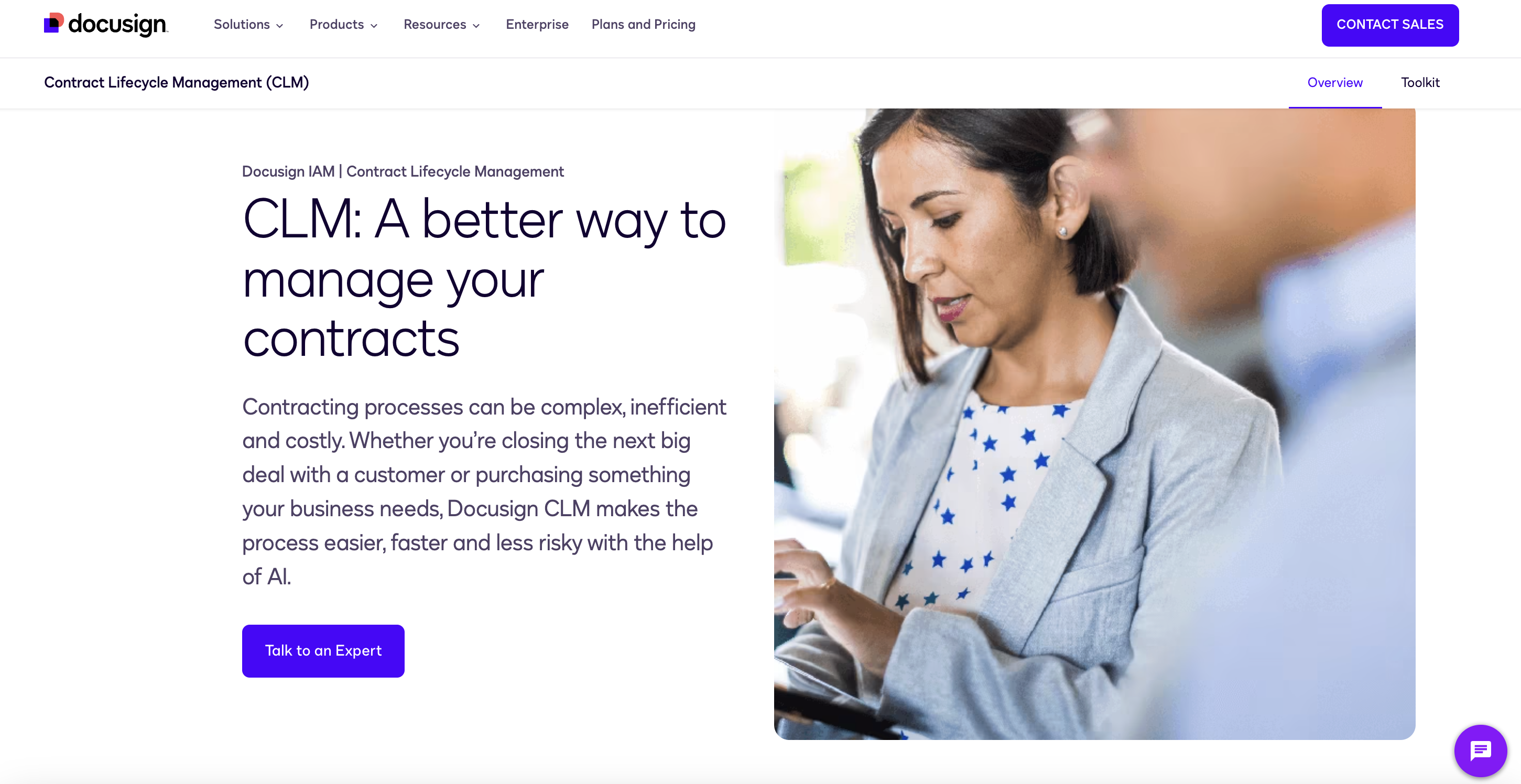
However, Docusign CLM customer reviews reveal that:
Conga positions its contract lifecycle management solution as part of the broader Conga Platform, focusing on flexibility and automation across the entire contract process. The platform integrates with a wide range of CRMs, ERPs, and procurement systems, aiming to support diverse business environments.
Recent updates highlight AI-driven capabilities like bulk document upload, automated extraction of clauses and provisions, multilingual analysis, and risk scoring to flag non-standard terms. Conga also offers configurable workflows, templates, and dashboards to manage obligations, renewals, and approvals, helping teams maintain visibility and compliance while reducing manual effort.

However, customer reviews of Conga CLM show high levels of dissatisfaction with feature usability, interface design and overall scalability:
Ironclad positions its platform as an AI-enabled contract lifecycle management solution. Its Jurist assistant now includes guided prompts and a prompt library. The company has combined its Dashboard and Repository into a single interface for managing live workflows and archived contracts.
Updates also include changes to its entity and obligation features, allowing contracts to be linked to entities and used in workflow conditions, alongside adjustments to user permissions and dashboard layouts. Ironclad has expanded its learning resources through Ironclad Academy, adding new training content and optional skill badges for users.
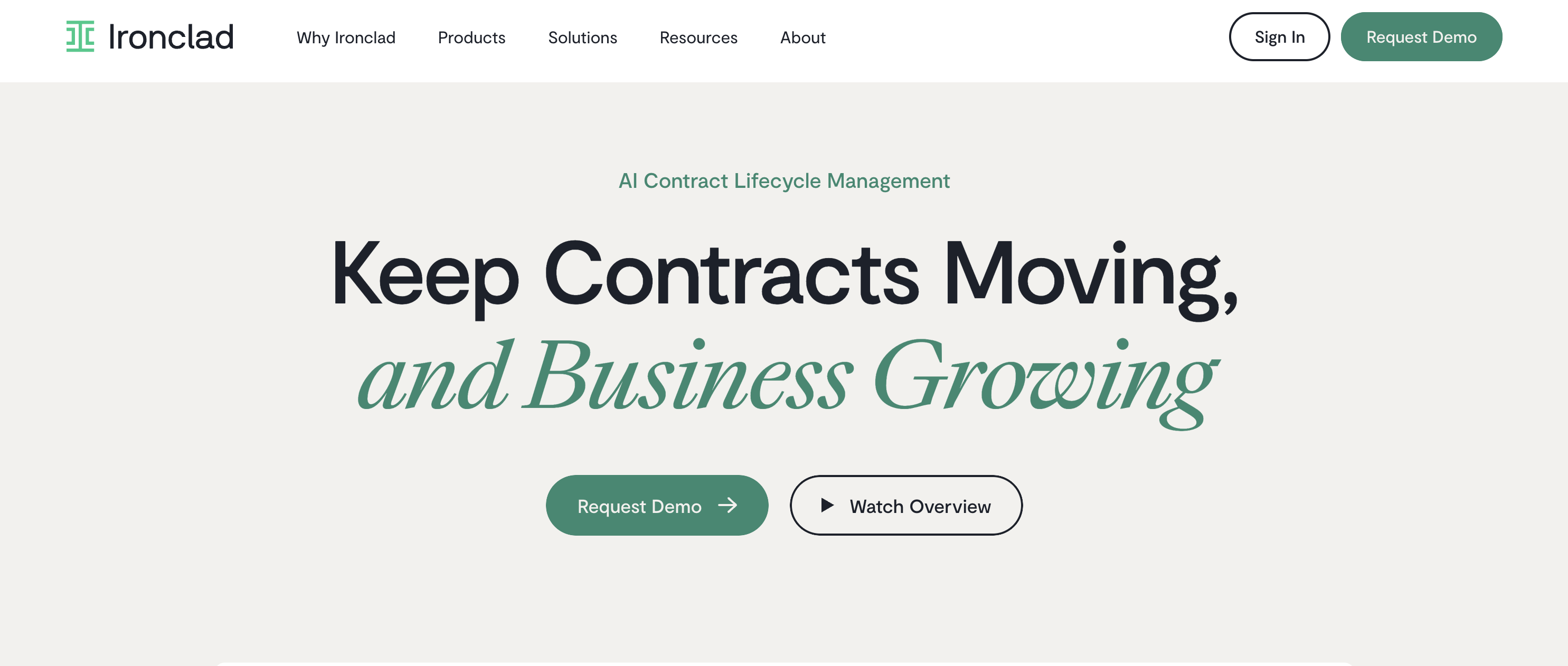
Despite advanced AI features, Ironclad customer reviews highlight missing functionality, poor AI capabilities and system intuitiveness and:
Gatekeeper is the only unified platform that connects contract, third-party and spend management in one continuous lifecycle. Powered by LuminIQ AI Agents , it transforms contract management into a strategic advantage for Procurement, Finance, Compliance and Legal teams.
Gatekeeper provides a secure, centralized contract repository that eliminates scattered inboxes and shared drives. Every agreement is version controlled, searchable by metadata, and tied to the vendor’s risk profile.
LuminIQ AI strengthens visibility by extracting obligations and key terms from both legacy and new contracts. Legal, Procurement, and Finance no longer need to chase missing details, and high-risk vendors are flagged early so nothing slips through the cracks.
Speed is essential, but not at the cost of compliance. Gatekeeper provides guard-railed workflows, templates, and collaborative redlining through its partnership with LegalOn, to keep negotiations moving while ensuring policy alignment.
Redlining options integrate with Microsoft Office and Google Docs to simplify stakeholder collaboration.
Native and integrated eSignatures accelerate execution, allowing contracts to be signed securely without leaving the workflow.
Touchless contracts automate routine agreements such as NDAs, freeing Legal to focus on high-value negotiations while Procurement moves suppliers through faster.
This partnership between Legal and Procurement means contracts are both fast and safe, without compromising compliance.
Where many tools stop, Gatekeeper continues.
Automated renewals ensure critical dates are never missed and prevent costly auto-rolls.
Best-practice workflows and templates standardize processes, reduce errors, and embed compliance by design.
Spend and performance visibility helps Finance and Procurement track value delivered, identify consolidation opportunities, and prevent leakage.
With LuminIQ surfacing insights directly from live data, teams stay aligned long after signature, ensuring the business captures the value it negotiated.
With a quarter of your workforce engaged in contract processes, inefficiencies can no longer be ignored. The best contract management software offers a transformative solution to the challenges of manual processes, bringing visibility, control, and compliance to your organization.
Take the first step towards streamlined contract management. Book a demo today and discover how Gatekeeper can transform your operations.
Ready to improve your contract & vendor management?
.png)
.png)
.png)
-4.png)
Before Gatekeeper, our contracts
Anastasiia Sergeeva, Legal Operations Manager, BlaBlaCar
were everywhere and nowhere.
Gatekeeper is that friendly tap on the shoulder,
Donna Roccoforte, Paralegal, Hakkasan Group
to remind me what needs our attention.
Great System. Vetted over 25 other systems
Randall S. Wood, Associate Corporate Counsel, Cricut
and Gatekeeper rose to the top.
Thank you for requesting your demo.
Next Step - Book a Call
Please book a convenient time for a quick call to discuss your requirements.